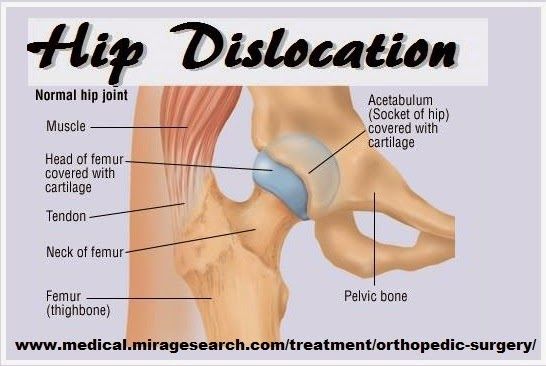Hip Ball and Socket Pain: Understanding Causes and Treatments for Hip Discomfort
What are the common causes of hip ball and socket pain. How can you identify different types of hip pain. What treatments are available for hip discomfort. How does the anatomy of the hip joint contribute to pain. When should you see a doctor for hip pain.
The Anatomy of the Hip Joint: A Complex Ball-and-Socket Structure
The hip joint is a remarkable piece of biological engineering, designed to provide stability and a wide range of motion. At its core, it’s a ball-and-socket joint where the femoral head (the ball) fits snugly into the acetabulum (the socket) of the pelvis. This design allows for fluid movement in multiple directions, enabling activities like walking, running, and climbing stairs.
Key components of the hip joint include:
- Femoral head: The rounded top of the thighbone
- Acetabulum: The cup-shaped socket in the pelvis
- Articular cartilage: Smooth tissue covering the femoral head and acetabulum
- Labrum: A ring of cartilage that surrounds the outer edge of the acetabulum
- Ligaments: Tough bands of tissue that help stabilize the joint
- Synovial membrane: Produces fluid to lubricate the joint
Understanding this anatomy is crucial for identifying the source of hip pain and determining appropriate treatments.
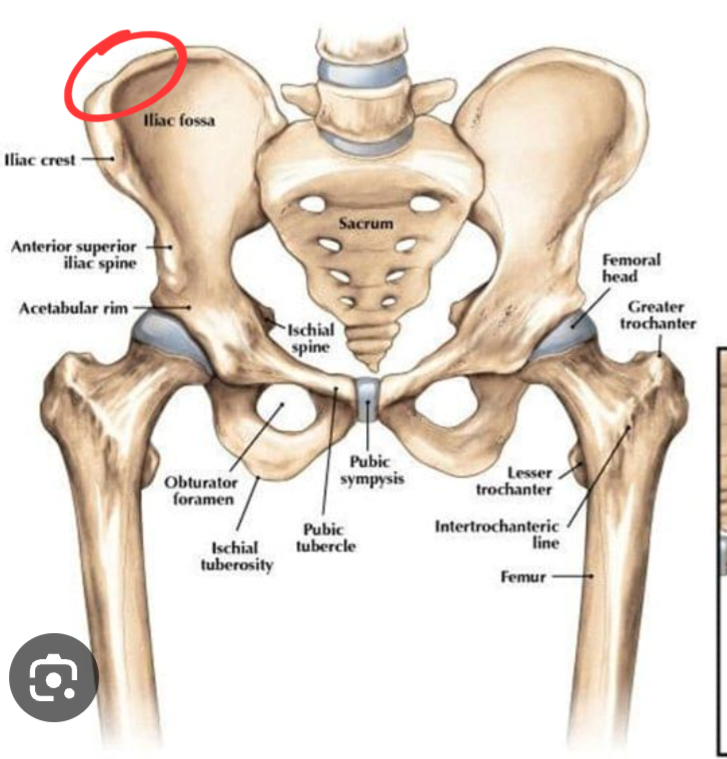
Common Causes of Lateral Hip Pain: Beyond the Joint
Lateral hip pain, which occurs on the outer side of the hip, can be caused by various conditions affecting the surrounding structures. What are some common causes of lateral hip pain?
Trochanteric Bursitis
Trochanteric bursitis is a frequent cause of lateral hip pain. It involves inflammation of the bursa, a small fluid-filled sac that acts as a cushion between the greater trochanter (a bony prominence on the outer thigh) and the overlying soft tissues. This condition can cause tenderness and pain over the bony part of the hip joint, sometimes radiating down the leg.
Greater Trochanteric Pain Syndrome (GTPS)
GTPS is a broader term that encompasses trochanteric bursitis and other conditions affecting the muscles and tendons around the greater trochanter. This syndrome can result in chronic pain and may be linked to issues in the lumbar spine.
Iliopsoas Tendonitis
Inflammation of the iliopsoas tendon, which runs over the edge of the pelvis and assists in leg flexion, can cause pain in the hip region. This condition often improves with conservative treatment and rarely requires surgical intervention.

Internal Hip Joint Issues: When the Problem Lies Within
While lateral hip pain often involves structures surrounding the joint, some conditions directly affect the internal components of the hip. What are some common internal hip joint problems?
Torn Acetabular Labrum
The acetabular labrum, a ring of cartilage surrounding the hip socket, can tear due to various factors. This may result from developmental issues, trauma, or repetitive stress. Symptoms can include pain, clicking, and a feeling of instability in the hip.
Femoroacetabular Impingement (FAI)
FAI occurs when there’s abnormal contact between the femoral head and the acetabulum. This can be due to bony irregularities on either the ball (cam lesion) or socket (pincer lesion) side of the joint. Over time, FAI can lead to labral tears and osteoarthritis.
Diagnostic Approaches: Identifying the Source of Hip Pain
Accurate diagnosis is crucial for effective treatment of hip pain. How do healthcare providers diagnose hip conditions?

- Physical examination: Assessing range of motion, strength, and areas of tenderness
- Imaging studies: X-rays, MRI, or CT scans to visualize bone and soft tissue structures
- Arthrogram: Injection of contrast dye into the joint before imaging for enhanced detail
- Diagnostic injections: To pinpoint the source of pain and confirm diagnosis
These diagnostic tools help healthcare providers determine the specific cause of hip pain and develop an appropriate treatment plan.
Conservative Treatment Options: Managing Hip Pain Without Surgery
Many hip conditions can be effectively managed with non-surgical approaches. What are some conservative treatment options for hip pain?
Rest and Activity Modification
Allowing the affected area to rest and avoiding activities that exacerbate pain can help reduce inflammation and promote healing. This may involve temporary use of crutches or a cane to offload the affected hip.
Physical Therapy
A structured physical therapy program can help strengthen the muscles supporting the hip, improve flexibility, and correct biomechanical issues that may be contributing to pain. Therapists may use techniques such as manual therapy, stretching exercises, and gait training.
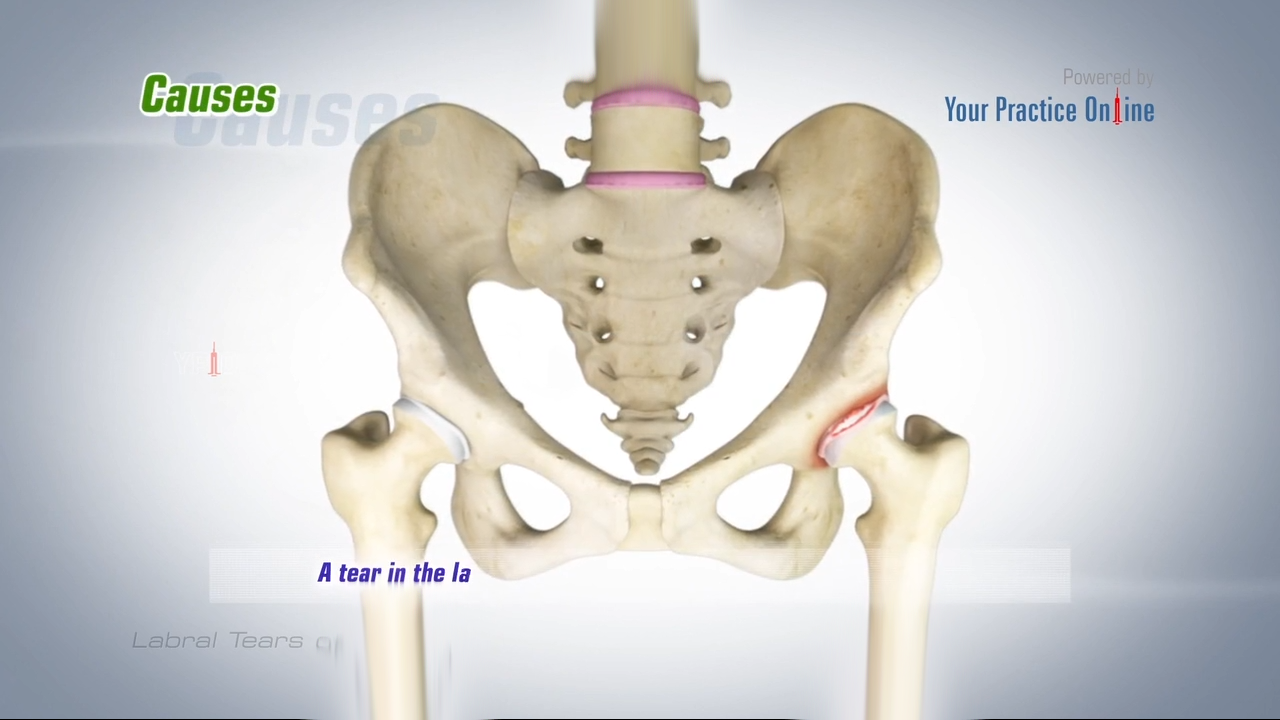
Medications
Over-the-counter or prescription anti-inflammatory medications can help manage pain and reduce inflammation. In some cases, corticosteroid injections may be recommended to provide more targeted relief.
Posture and Ergonomic Adjustments
Improving posture and making ergonomic adjustments at home and work can help alleviate stress on the hip joint and surrounding structures. This may include using supportive chairs, adjusting workstation heights, and practicing proper body mechanics during daily activities.
Surgical Interventions: When Conservative Measures Aren’t Enough
In some cases, hip pain may persist despite conservative treatment, necessitating surgical intervention. What surgical options are available for hip conditions?
Hip Arthroscopy
This minimally invasive procedure allows surgeons to visualize and treat various hip conditions through small incisions. It’s commonly used for labral repairs, removal of loose bodies, and treatment of femoroacetabular impingement.

Hip Preservation Surgery
For younger patients with hip dysplasia or other structural abnormalities, hip preservation surgery may be recommended to correct the underlying issue and prevent or delay the need for hip replacement.
Total Hip Replacement
In cases of severe osteoarthritis or other degenerative conditions, total hip replacement may be the best option to relieve pain and restore function. Modern techniques and materials have greatly improved the longevity and outcomes of hip replacements.
Preventing Hip Pain: Strategies for Long-Term Joint Health
While not all hip conditions can be prevented, there are steps individuals can take to maintain hip health and reduce the risk of developing pain. What are some effective strategies for preventing hip pain?
Maintaining a Healthy Weight
Excess body weight puts additional stress on the hip joints. Maintaining a healthy weight through proper diet and exercise can significantly reduce the risk of hip pain and osteoarthritis.
Regular Exercise
Engaging in regular, low-impact exercises can help strengthen the muscles supporting the hip joint and improve flexibility. Activities such as swimming, cycling, and yoga are excellent options for maintaining hip health.
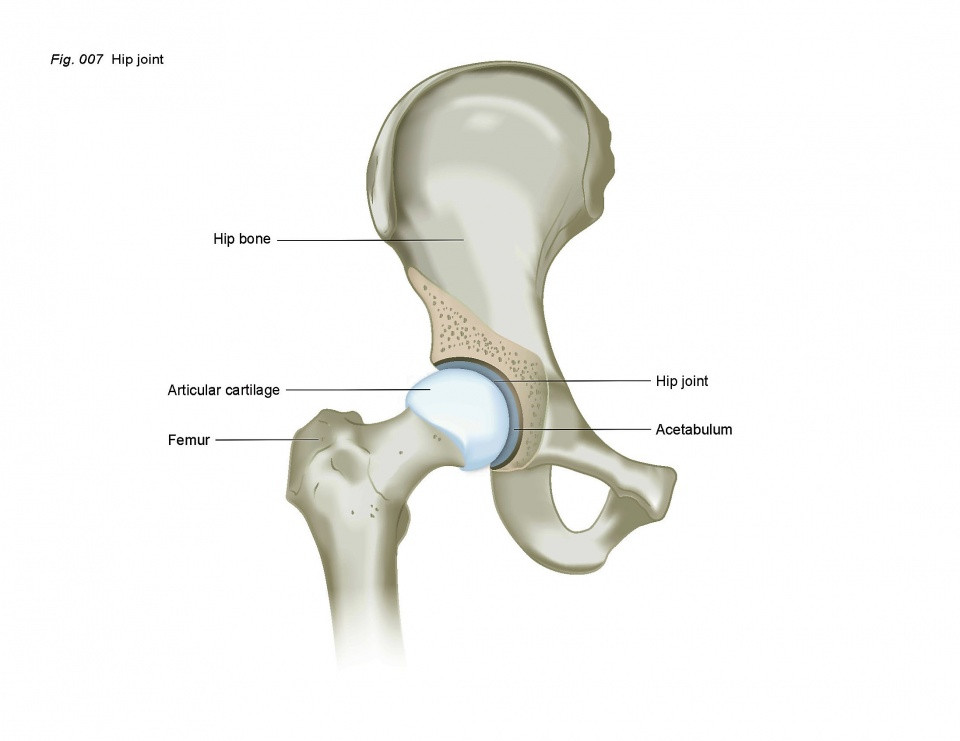
Proper Warm-up and Stretching
Before engaging in physical activities, especially high-impact sports, it’s important to warm up properly and perform stretching exercises. This can help prevent injuries and reduce stress on the hip joint.
Ergonomic Considerations
Paying attention to ergonomics in daily life, including proper sitting posture, workstation setup, and sleeping positions, can help reduce unnecessary stress on the hip joints and surrounding structures.
When to Seek Medical Attention: Red Flags for Hip Pain
While some hip pain may resolve on its own or with home remedies, certain symptoms warrant prompt medical attention. When should you see a doctor for hip pain?
- Severe pain that interferes with daily activities or sleep
- Pain accompanied by swelling, redness, or warmth around the joint
- Sudden onset of pain following an injury or fall
- Pain associated with fever or unexplained weight loss
- Difficulty bearing weight on the affected leg
- Persistent pain that doesn’t improve with rest and over-the-counter medications
Early evaluation by a healthcare provider can lead to more effective treatment and prevent potential complications.

Understanding the complexities of hip ball and socket pain is crucial for effective management and treatment. By recognizing the various causes, from external factors like trochanteric bursitis to internal issues such as labral tears, individuals can work with healthcare providers to develop targeted treatment plans. Whether through conservative measures like physical therapy and medications or surgical interventions when necessary, there are numerous options available to address hip pain and improve quality of life. By staying informed about hip health and taking proactive steps to prevent injuries, individuals can maintain active, pain-free lifestyles well into their later years.
Hip pain | Causes, exercises, treatments
Lateral hip pain
There are a number of conditions that can affect the outside of your hip joint. Your diagnosis will depend on how wide the affected area is.
Trochanteric bursitis
Bursae are small fluid-filled pouches, which act like cushions to reduce friction where parts of the body move over one another, for example where tendons or ligaments pass over bones.
If you have tenderness over the bony part of your hip joint, you may have trochanteric bursitis. This is caused by inflammation of the bursa at the top of the thighbone. Inflammation is a normal reaction to infection or injury and causes the bursa to become swollen, hot and painful.
It’s a very common condition, but there’s usually no obvious cause. You may just feel pain over this bony point, but it can spread down the leg or it may seem to be coming from the hip joint itself.
Trochanteric bursitis often happens in both hips.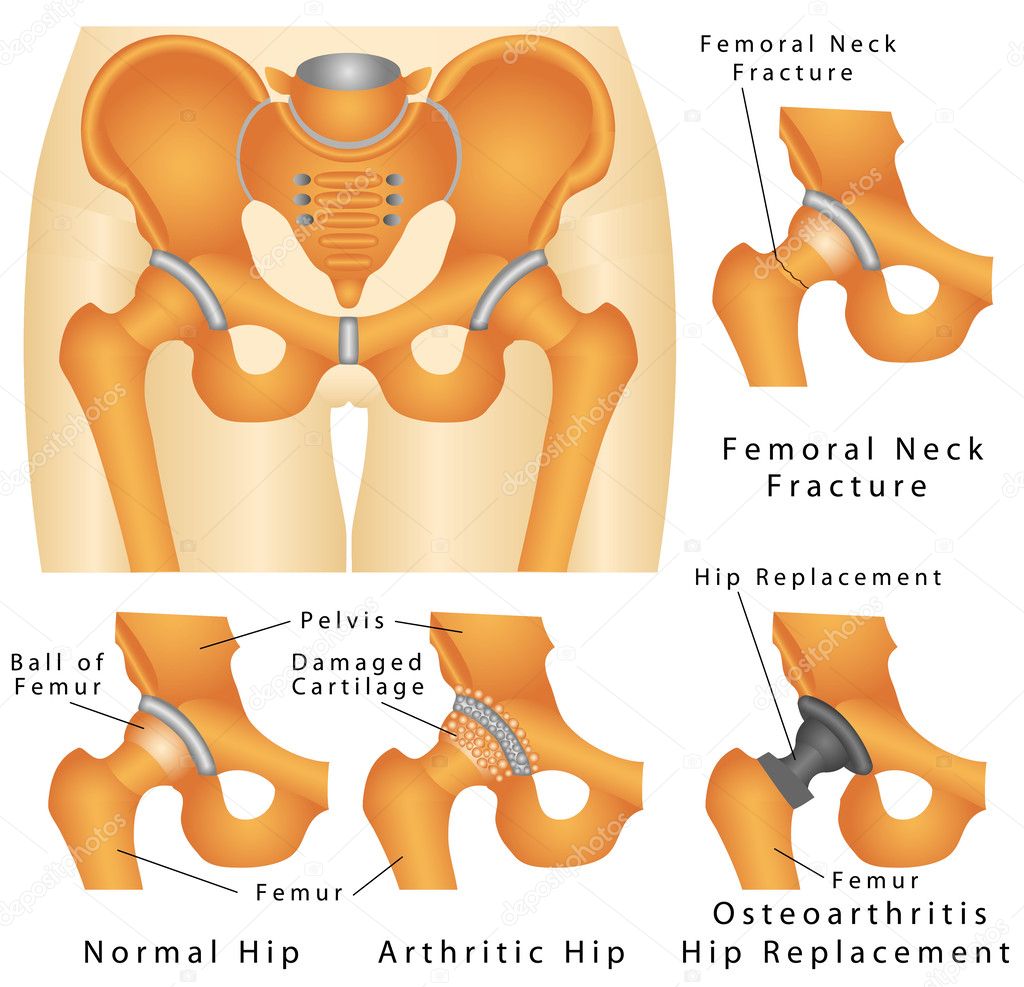 It usually improves with rest, painkillers and physiotherapy.
It usually improves with rest, painkillers and physiotherapy.
Very occasionally the condition can last for longer than expected, and it’s sometimes linked to problems with the area of the lower back known as the lumbar spine. Paying attention to your posture can make a big difference. The condition is common and often chronic and in many cases it’s an over-looked diagnosis.
It’s now known to affect your muscles and tendons around the trochanteric area as well, not just the bursa. This can mean you may be referred to a specialist in sports medicine, orthopaedics, rheumatology or spinal medicine.
There are also now a number of names given to this condition, depending on what type of doctor diagnoses it and how wide the area affected is. You may be told you have greater trochanter pain syndrome, trochanteric tendinobursitis or gluteal tendinopathy.
Iliopsoas tendonitis
Iliopsoas tendonitis is inflammation of the iliopsoas tendon that runs over the edge of the pelvis and helps you bend your leg up.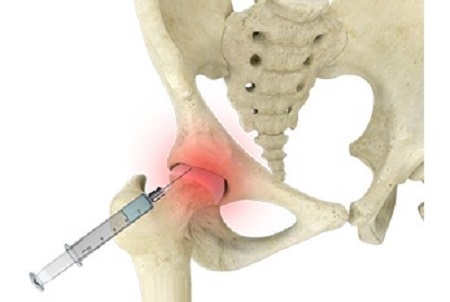 This usually gets better on its own.
This usually gets better on its own.
Snapping iliopsoas tendon
A snapping iliopsoas tendon doesn’t usually cause hip pain. ‘Snapping’ refers to a clicking noise you may be aware of as the tendon flicks over the edge of your pelvis when you move, it doesn’t mean the tendon breaks.
Some people say the sensation feels like their hip is popping out of place. If your doctor thinks you have this condition they’ll usually recommend you rest and use painkillers until it settles. Tests and surgery are rarely needed.
Torn acetabular labrum
The acetabular labrum is a thick ring of cartilage around the hip socket. It can be torn if the ball or socket of the hip are misshapen. This can be the result of hip problems in childhood or changes to the shape of the hip as it develops, but in most cases the cause is unknown.
If the ball of the hip joint is affected, it’s called a cam lesion. When the socket is affected, it’s known as a pincer lesion. We don’t yet know whether treating these problems with surgery prevents you from getting osteoarthritis in later life.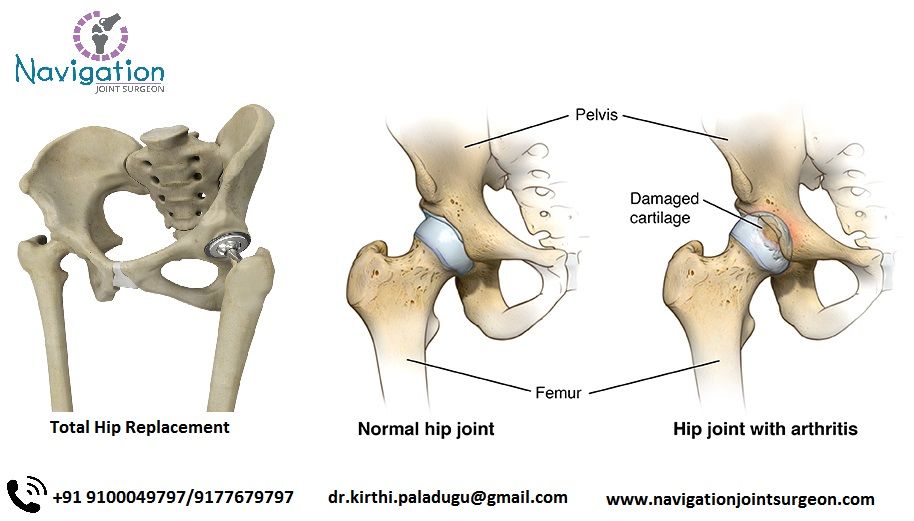
If your doctor thinks you have a torn acetabular labrum, they may recommend you have an arthrogram investigation. This is where a small amount of dye is injected into the hip joint before an MRI or CT scan. This gives a clear image of the surface of the bones, soft tissues and cartilage in the joint.
Northland Orthopedics & Sports Medicine:
If you’ve been experiencing pain in your hip or groin when you walk or attempt to participate in your favorite recreational activity, it could be a sign of hip impingement. This means the head of your thigh bone (the ball) doesn’t fit perfectly into your hip socket for one reason or another.
Here at Northland Orthopedic & Sports Medicine in Kansas CIty, Missouri, our team of experienced orthopedic physicians and hip specialists can determine if your hip pain is a sign of hip impingement. And if that’s the case, we can recommend effective treatment to get you back in the game, or simply back to your daily activities with less pain.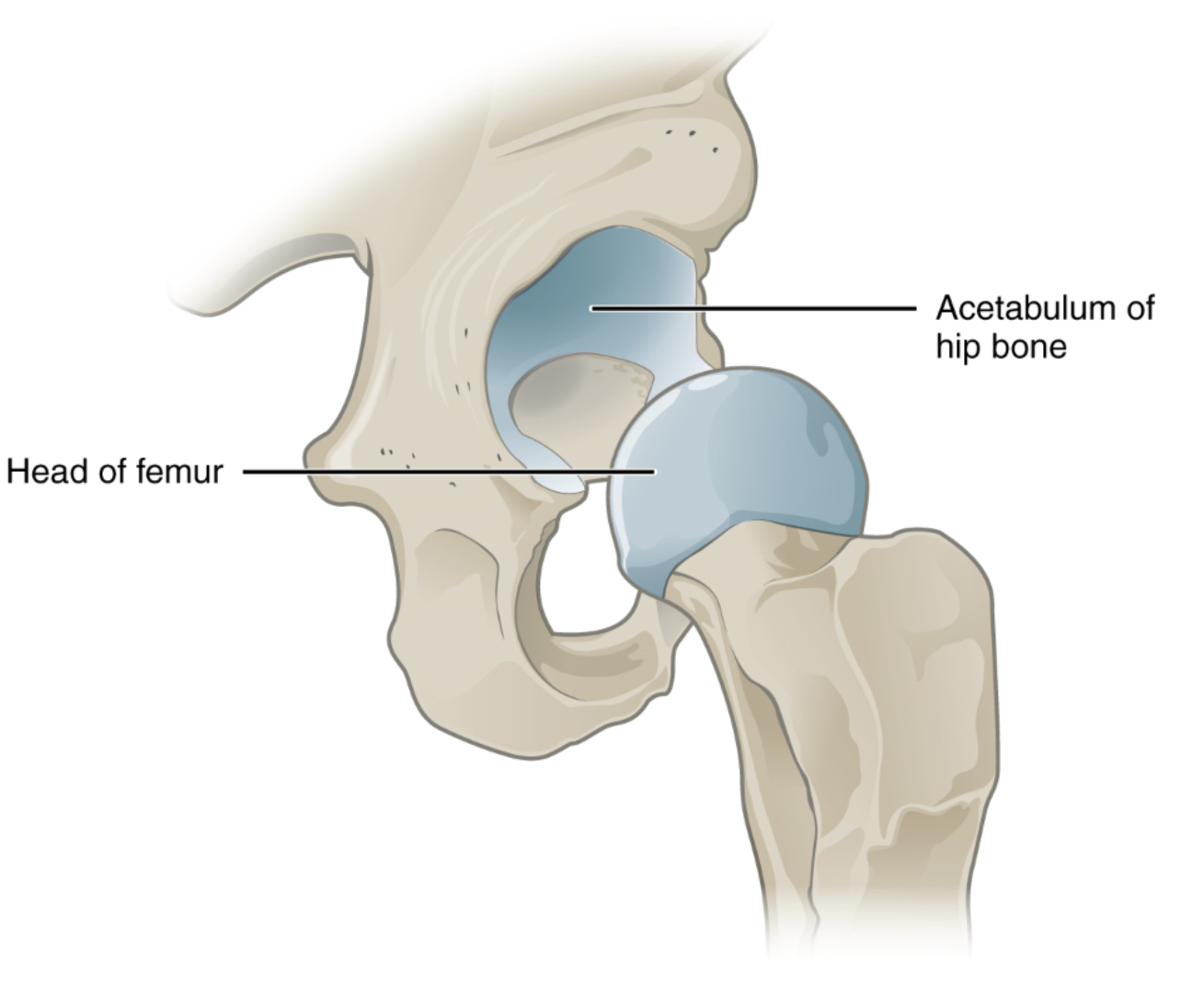
Your hip ball-and-socket joint explained
The reason your hip joints work well and allow you to move your legs in many directions is because of the way the bones fit together. The round top of your thigh bone — the femoral head — is designed to fit snugly into your hip socket like a baseball fits into a glove. A protective lining of smooth cartilage cushions the space between the top of your thigh bone and the hip socket so they don’t rub against each other and cause pain. The socket also has special cartilage — the labrum — that helps hold the head of the thigh bone in place in the hip socket.
When something isn’t quite right with any of these moving parts, or you injure your hip, you may experience hip impingement. Hip impingement can occur any time, but it often occurs in the teen and young adult years, when you’re more likely to engage in competitive sports and strenuous physical activity.
Symptoms of hip impingement
At first, you may just feel like you pulled a muscle, as your symptoms may be mild. For example, you might notice stiffness in one of your hips or the groin area on one side. As the condition progresses, though, your symptoms may become more pronounced, including:
For example, you might notice stiffness in one of your hips or the groin area on one side. As the condition progresses, though, your symptoms may become more pronounced, including:
- Pain that spreads into your thigh
- Pain in your hip when you sit with your ankles crossed, knees close to the floor
- Groin or hip pain when you turn, twist, or squat
- Lower back pain
- Decreased range of motion of your hip
If these symptoms persist, it could be a sign that your pain is more than a pulled muscle or stiff joint. Let our team of physicians evaluate you to determine if you are experiencing a hip impingement.
Causes of hip impingement
You could have a hip impingement as a result of a congenital defect, meaning one of your hip ball-and-socket joints may have been slightly abnormal from birth. It’s also possible that your hip bones didn’t develop normally during childhood as you were growing. Another common cause of hip impingement is recreational sports, including professional and leisure activities.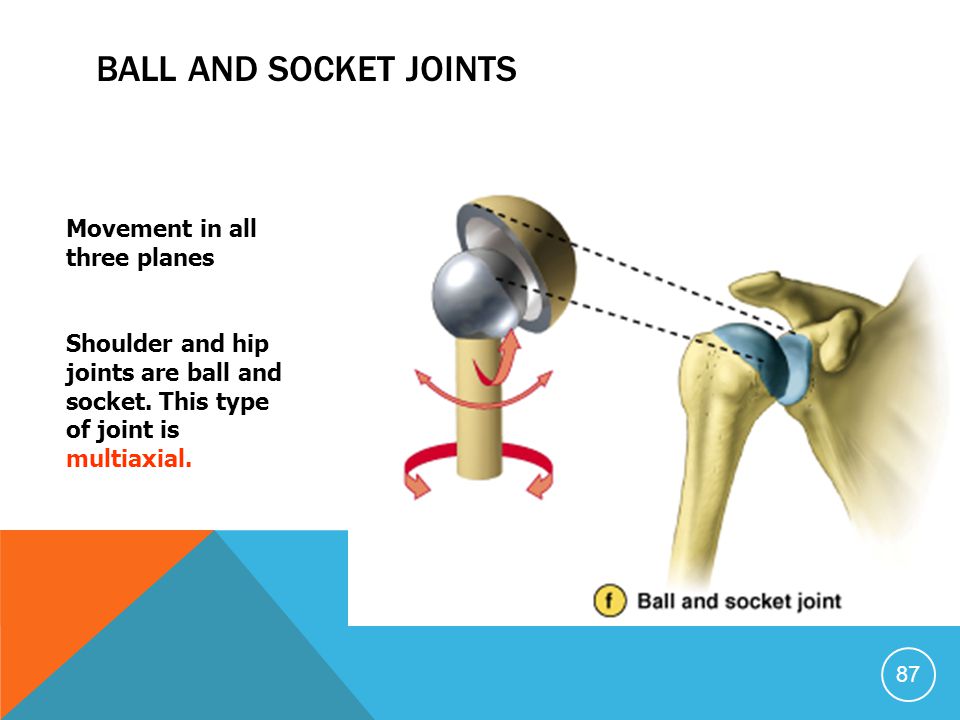
Sports
Hip impingement can happen with any physical activity but is common in dancers or gymnasts, soccer, football, and hockey.
Cam impingement
Because of repetitive hip motions, a bone spur can develop and deform the shape of the ball so it doesn’t fit properly in the socket. This is called cam impingement.
Pincer impingement
Another form of impingement can occur when the neck of your femur bone bumps the rim of the socket and grinds it. This is called pincer impingement and can result in cartilage and labrum damage and tearing, as well.
When you have both conditions at the same time — a problem with the ball joint and grinding in the socket — you have cam and pincer impingement, or combined impingement. Left untreated, any form of hip impingement may lead to arthritis in your hip joint.
Our experienced hip specialists are well versed in both operative and non-operative care of the hip including arthroscopic labral repair as well as in-office ultrasound-guided hip injections.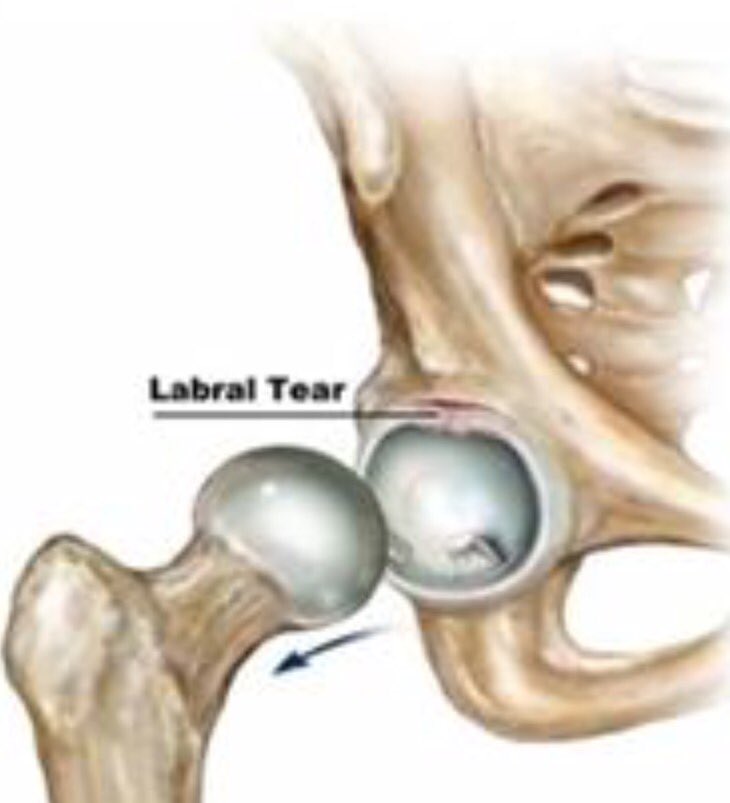
Don’t wait until the pain is unbearable or severely limits your activity. Give us a call at 816-841-3805 to schedule an evaluation, or contact us online today.
Excessive Friction in Your Hip Joint Can Cause Femoral Acetabular Impingement (FAI): Struan Coleman, MD, PhD: Orthopedic Surgeons
Hip pain is a fairly common complaint among both men and women, and especially among people who are very physically active. Several factors can cause or contribute to hip pain, but one of the most common causes is a condition called femoral acetabular impingement or FAI.
Hip joint anatomy
Your hip is a ball-and-socket joint comprising two main bones: your femur or thigh bone and your pelvic bone, or more specifically, a concave area of the pelvic bone called the acetabulum. The acetabulum is shaped kind of like a cup. It forms the socket portion of the joint, cradling or cupping the rounded, ball-shaped head of the femur (also called the femoral head).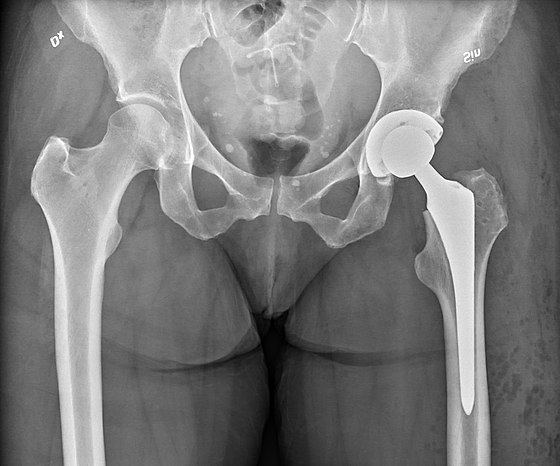
Both the femoral head and the acetabulum are lined with a thick layer of cartilage, which prevents friction between the joint components and helps the joint move smoothly. Sometimes, though, the cartilage can be damaged, or the hip joint may not “fit together” the way it’s supposed to. In both these cases, friction inside the joint increases. Arthritis is one cause of hip joint friction, but it can also be caused by FAI.
Three types of FAI
FAI can be categorized into three broad “types,” depending on whether the femur or acetabulum is causing problems.
- In a pincer impingement, hard growths called bone spurs or other irregularities occur on the surface or edge of the acetabulum. These irregularities scrape against the femoral head, pinching it and causing symptoms.
- Cam impingements are caused by irregularities on the femoral head. These irregularities can prevent the ball part of the joint from moving smoothly in the socket, and they can also damage the surface of the acetabulum.

- Some people have a combination of both pincer-type impingement and cam impingement, which means both joint components have some sort of irregularities that are increasing friction inside the joint.
Some people who have FAI have defects in the shape of the joint. These defects can be present from birth or develop as the bones form, or they may be caused by traumatic injury.
Damage to joint components
Left untreated, FAI can cause substantial damage to the hip joint components. As the ball and socket portions rub against each other, friction inside the joint increases, which in turn leads to irritation and inflammation inside the joint. Over time, the protective layer of cartilage will become worn in areas where friction is greatest, resulting in pain, stiffness, and general joint dysfunction. Many people with advanced FAI find themselves limping or changing the way they walk in order to take pressure off the sore hip. Instead of relieving friction and pain inside the affected joint, changes in the way you walk can wind up placing excess strain on your other hip, which means it may be at an increased risk for damage.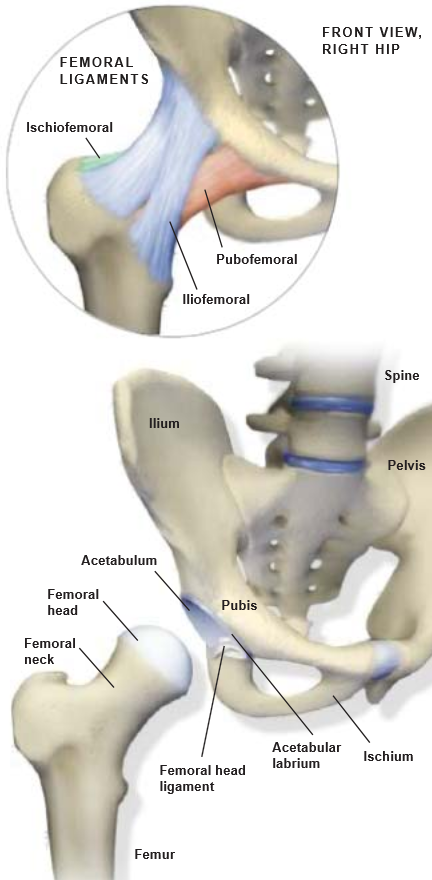
Because of the uneven wear and increased friction inside the joint, people who have FAI and don’t have it treated are at an increased risk for developing severe arthritis in the hip. Over time, untreated FAI can increase the likelihood you’ll need a hip joint replacement, or it can mean you’ll need a hip replacement earlier than you otherwise would.
Symptoms and treatment
Although FAI is more common among very active athletes and people who participate in high-impact activities, anyone can develop the condition. The most common symptoms of FAI include:
- sharp pain in the hip
- pain in the groin
- throbbing aching around the hip joint
- hip joint stiffness
- clicking or grinding sensations in the hip
- pain that increases when pivoting your hip
Treatment begins with conservative options like rest from strenuous activity combined with physical therapy to restore function and reduce stiffness and pain in the joint.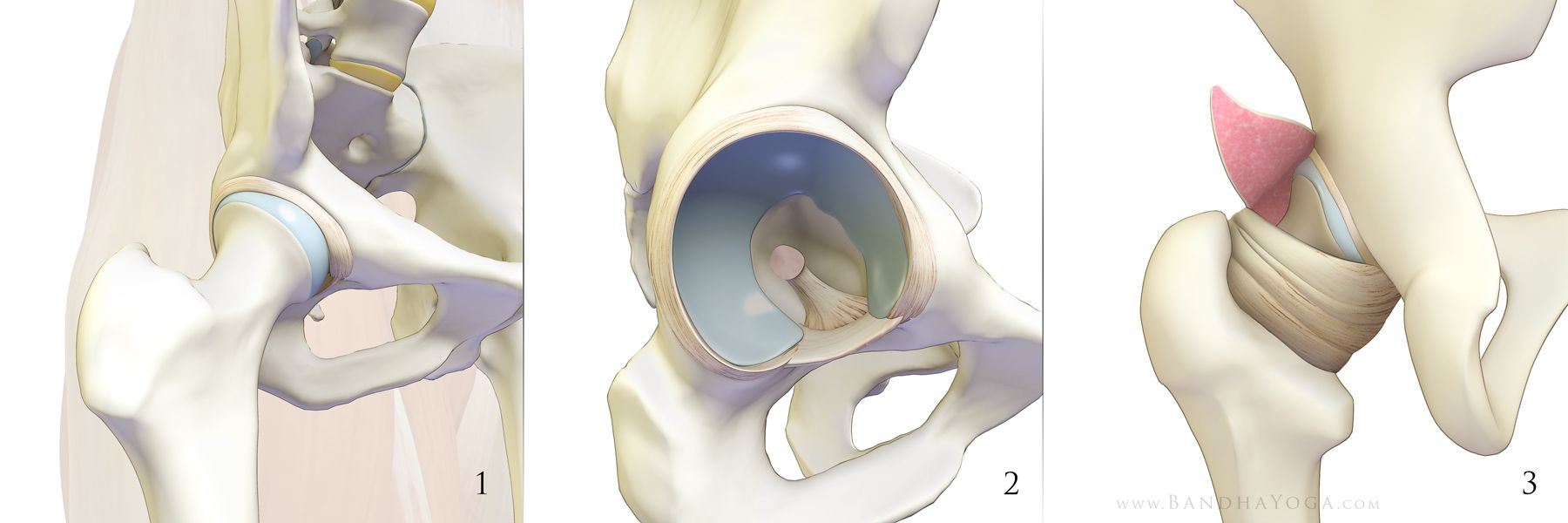 Over-the-counter pain medicines can help with some symptoms, and injections of corticosteroids also can be very beneficial for more moderate to severe symptoms.
Over-the-counter pain medicines can help with some symptoms, and injections of corticosteroids also can be very beneficial for more moderate to severe symptoms.
When conservative techniques aren’t effective in providing symptom relief, Dr. Coleman may recommend a minimally invasive procedure called a hip arthroplasty to repair the joint surfaces, remove bony growths, or perform other procedures to help restore normal joint function.
Learn what’s causing your hip pain
Because different conditions can cause painful hip symptoms, the only way to know if you have FAI or another underlying problem is to have your hip pain evaluated. As a leading orthopedic surgeon, Dr. Struan Coleman is skilled in diagnosing the cause of hip pain so patients can receive the most appropriate and most effective care for their needs. Take the next step toward resolving your hip pain and stiffness. Contact the practice and schedule your consultation and evaluation today.
Hip Arthritis & Treatments: Osteotomy, Hip Replacement
Hip arthritis is one of the most commonly treated conditions at HSS.
How does the hip joint work?
The hip is a ball-and-socket joint. The ball, at the top of the femur (thighbone) is called the femoral head. The socket, called the acetabulum, is a part of the pelvis. The ball moves in the socket, allowing the leg to rotate and move forward, backward and sideways.
In a healthy hip, the ball and socket are covered by a glistening layer called articular cartilage. This cartilage, which can be seen on an X-ray as the space in between the ball and the socket, is what allows the bones of the hip joint to glide together smoothly – with less resistance than ice sliding on ice. In addition, there is a special layer of exceptionally strong cartilage in the acetabulum called the labrum. The structure of the hip joint gives it a wide range of motion. It is a very stable joint because of the large area of between the femoral head and the labrum-lined acetabulum.
Illustration and X-ray image of a healthy hip joint.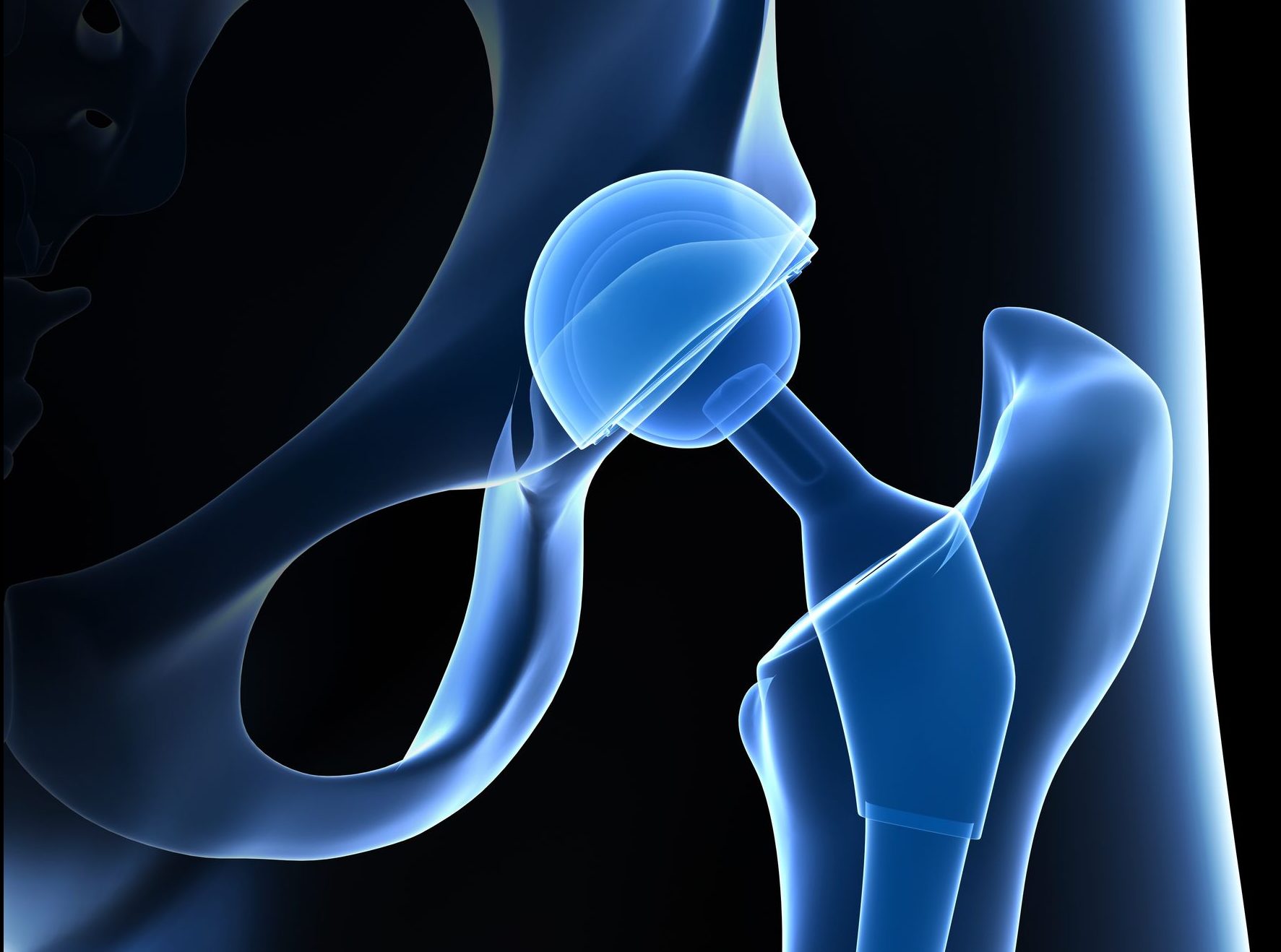
What is hip arthritis?
Hip arthritis is where cartilage in the hip joint wears down or is damaged, leaving the bone surfaces of the joint to grind together and become rough. This causes pain and stiffness, making it difficult to move the leg.
There are different forms of hip arthritis, but all involve a loss of cartilage in the hip joint that eventually leads to bone rubbing on bone and destruction of the joint.
X-Ray of an arthritic hip
What causes hip arthritis?
Osteoarthritis is the most common type of arthritis to affect the hip. This is simply wear and tear of the joint over time, and it usually occurs in people aged 60 and older. Most people will experience some form of osteoarthritis as they age.
The joints that become affected, how badly, and at what age vary from person to person, depending upon other factors specific to each individual, such as:
- anatomic structure of the hip (the natural strength and/or angles of a person’s bones)
- weight
- activity level
Other underlying conditions can cause of hip arthritis in younger patients.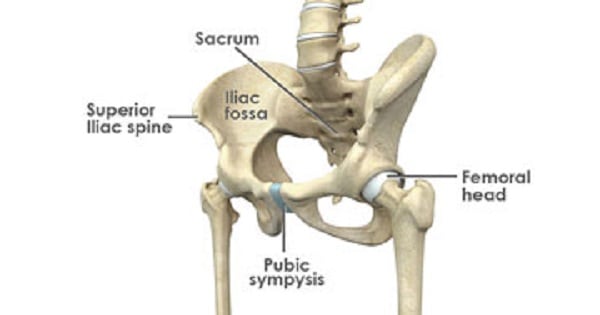 These include:
These include:
- autoimmune inflammatory diseases such as:
- infections
- traumatic hip injuries (such as a severe hip fracture)
- anatomic irregularities that place strain on the joint, leading to premature cartilage deterioration, such as:
The likelihood of getting hip arthritis increases with family history and advancing age. Patients who are overweight and those who have undergone trauma to the hip joint may also experience increased wearing out of cartilage.
Unfortunately, once the arthritic process begins, progression is almost always inevitable. The end result of all these processes is a loss of the cartilage of the hip joint, leading to bone-on-bone rubbing in the hip. However, the degree of pain and disability experienced by people with arthritis varies considerably.
What are the symptoms of hip arthritis?
For osteoarthritis of the hip, symptoms may include:
- aching pain in the groin area, outer thigh and buttocks
- joint stiffness
- reduced range of motion (for example, difficulty putting on shoes and socks)
In people who have hip osteoarthritis, walking and other motion that stresses the diseased hip cartilage usually increases pain symptoms and reduce a person’s ability to be active levels. At the same time, reduced activity – not moving the body much – can weaken the muscles that control the hip joint, which may make it even more difficult to perform daily activities.
At the same time, reduced activity – not moving the body much – can weaken the muscles that control the hip joint, which may make it even more difficult to perform daily activities.
Because of the loss of the gliding surfaces of the bone, people with arthritis may feel as though their hip is stiff and their motion is limited. Sometimes people actually feel a sense of catching, snapping or clicking within the hip. The pain is usually felt in the groin, but also may be felt on the side of the hip, the buttock and occasionally down into the knee. Activities such as walking long distances, standing for long periods of time or climbing stairs puts stress on the hip that generally makes arthritis pain worse.
In people who have rheumatoid arthritis in the hip, pain is usually worst after periods of rest and inactivity, such as first thing after waking up in the morning. This is because the inactivity causes the joints to stiffen. Pain is often relieved after a period of walking or other activity as the joint becomes more flexible.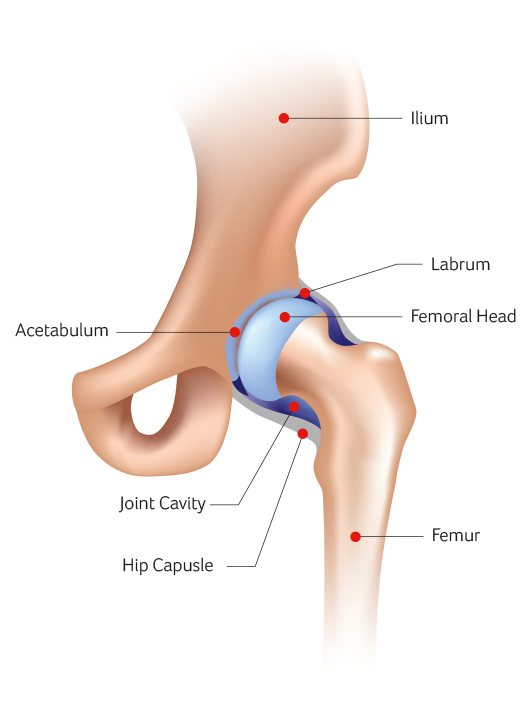 Some rheumatoid arthritis patients may experience pain, swelling, redness and warmth, especially in the morning.
Some rheumatoid arthritis patients may experience pain, swelling, redness and warmth, especially in the morning.
If I have arthritis in one hip, will I get it in the other?
People who have osteoarthritis in one hip will not necessarily get it in the opposite hip. In those who do develop this condition in both hips, one hip may reach the advanced stage before the other. People with rheumatoid arthritis are more likely to have symptoms in both hips.
How is hip arthritis treated?
Depending upon the severity of arthritis and the patient’s age, hip arthritis may be managed in a number of different ways. Treatment may consist of nonsurgical or surgical methods, or a combination of both.
Nonsurgical treatments for hip arthritis
Nonsurgical approaches that reduce pain and disability include:
- activity modification (reducing or stopping activities that cause pain)
- weight loss (to reduce strain on the joint)
- physical therapy
- NSAIDs (nonsteroidal anti-inflammatory medication drugs) such as:
- corticosteroid injections
The first line of treatment of hip arthritis includes activity modification, anti-inflammatory medication, hip injections and weight loss./GettyImages-97537748-565b29d75f9b5835e46bb40d.jpg) Weight loss helps decrease the force that goes across the hip joint. Giving up activities that make the pain worse may make this condition bearable for some people. Anti-inflammatory medications such as ibuprofen, naproxen and the newer Cox-2 inhibitors help alleviate the inflammation that may be contributing to the pain. Furthermore, studies have shown that walking with a cane (in the hand on the opposite side of the hip that is in pain) significantly decreases the forces across the hip joint.
Weight loss helps decrease the force that goes across the hip joint. Giving up activities that make the pain worse may make this condition bearable for some people. Anti-inflammatory medications such as ibuprofen, naproxen and the newer Cox-2 inhibitors help alleviate the inflammation that may be contributing to the pain. Furthermore, studies have shown that walking with a cane (in the hand on the opposite side of the hip that is in pain) significantly decreases the forces across the hip joint.
A combination of these non-operative measures may help ease the pain and disability caused by hip arthritis.
Surgical treatments for hip arthritis
If the non-operative methods have failed to make a person’s condition bearable, surgery may be the best option to treat hip arthritis. The exact type of surgery depends upon a patient’s age, anatomy, and underlying condition.
Surgical options for hip arthritis range from operations that preserve the hip joint to those that completely rebuild it.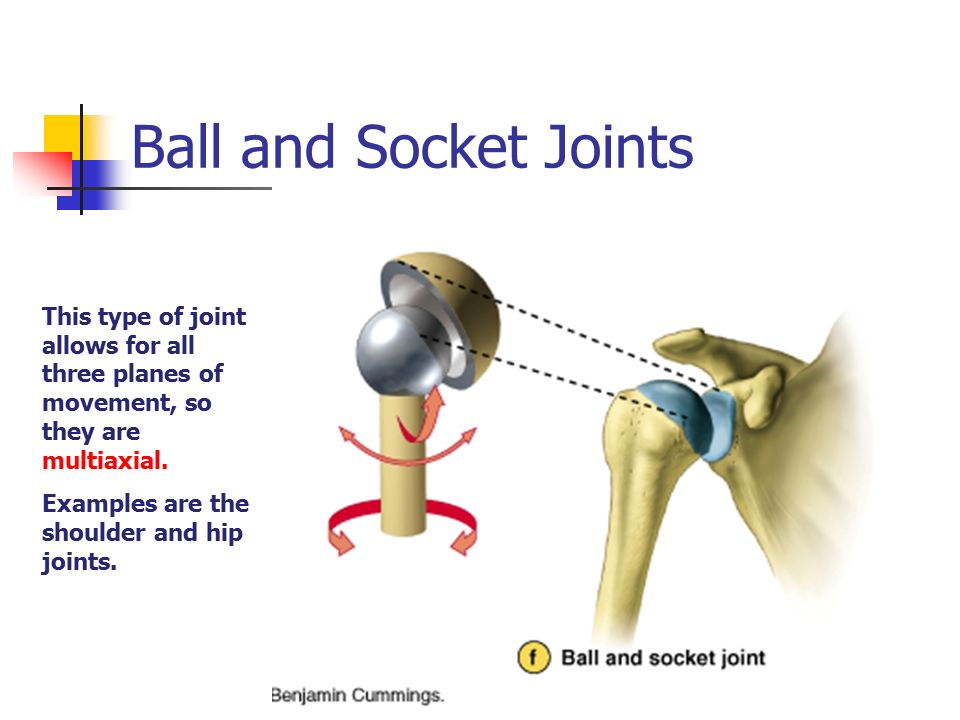 They include:
They include:
- Hip preservation surgeries: These are operations that prevent damaged cartilage from wearing down further. They include:
- Hip osteotomy: Cutting the femur or pelvic bone to realign its angle in the joint to prevent cartilage. An osteotomy may be appropriate if the patient is young and the arthritis is limited to a small area of the hip joint. It allows the surgeon to rotate the arthritic bone away from the hip joint, placing weightbearing on relatively uninvolved portions of the ball and socket. The advantage of this type of surgery is that the patient’s own hip joint is retained and could potentially provide many years of pain relief without the disadvantages of a prosthetic hip. The disadvantages include a longer course of rehabilitation and the possibility that arthritis could develop in the newly aligned hip.
- Hip arthrotomy: This is where the joint is opened up to clean out loose pieces of cartilage, remove bone spurs or tumors, or repair fractures.

- Hip arthroscopy: In this minimally invasive surgery, an arthroscopies used to clean out loose bodies in the joint or to remove bone spurs.
Joint fusion (arthrodesis): In this treatment, the pelvis and femur are surgically connected with pins or rods to immobilize the joint. This relieves pain but makes the hip permanently stiff, which makes it more difficult to walk.
- Total or partial joint replacement surgery
- Total hip replacement: Also known as total hip arthroplasty, this is the removal of the ball and socket of the hip, which are replaced with artificial implants.
- Partial hip replacement: Also called hemiarthroplasty, this involves replacing only one side of the hip joint – the femoral head – instead of both sides as in total hip replacement. This procedure is most commonly done in older patients who have had a hip fracture.
- Hip resurfacing: In this alternative to total hip replacement (appropriate for some patients), the arthritic cartilage and acetabulum (socket) are replaced, but the person’s natural femoral head is preserved.

Further reading related to hip arthritis
Learn more from the articles and other content below, or select Treating Physicians to find the best arthritis doctor at HSS for your specific condition and insurance.
Back in the Game patient stories
Guide | Physical Therapy Guide to Hip Impingement (Femoroacetabular Impingement)
Your physical therapist will conduct a thorough examination, including taking a detailed history, and may prescribe stretches and strengthening exercises to balance the muscles around your hip. They may use manual (hands-on) therapy to help restore your hip’s range of motion. Your physical therapist also may discuss making changes to your activities and lifestyle to help improve function and decrease your pain.
Without Surgery
Physical therapy may be beneficial for people with low-level hip pain and/or disability.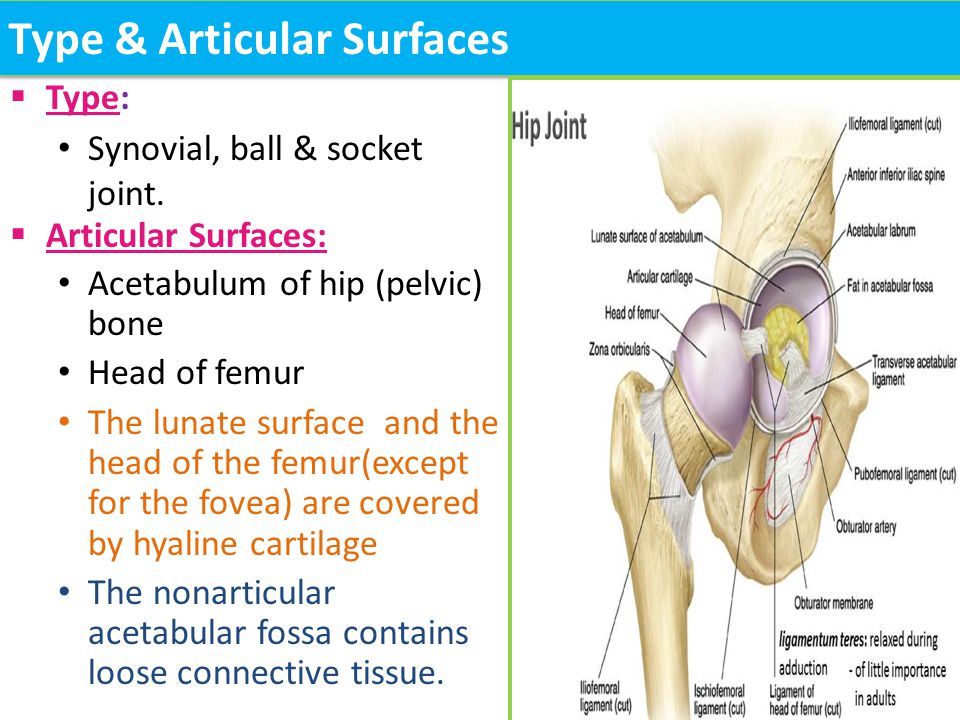 Conservative care aims to:
Conservative care aims to:
- Ease pain and discomfort.
- Address individual limitations.
- Improve overall function.
Your physical therapist may use some or all of the following approaches to help you achieve these goals. They may help you avoid the need for surgery or delay your condition getting worse. Your treatment may include:
Modifying your daily, job-related, and sports activities. Your physical therapist will recommend and discuss specific positions and activities for you to avoid or modify. These will be designed to protect your hip. They may recommend limiting how often you bend at the hip to avoid further hip damage. To minimize tension on the hip, your physical therapist will teach you safe, controlled movements.
Improving lower-extremity muscle flexibility and joint movement. Stretching tight muscles. Stretching the hip directly can reduce abnormal forces that cause pain with motion. Stretching other body regions (trunk, leg, ankle, or foot), also may decrease stress at the hip.
Joint mobilization. Your physical therapist may gently move your hip to help ease pain. This may improve your ability to stretch or extend your hip joint.
Improving the strength of your lower extremities and trunk. Strengthening the hips and trunk can reduce abnormal forces on the already injured joint. Your physical therapist will help you develop movement strategies to compensate for the injured hip joint.
Improving lower-extremity balance and coordination. Your physical therapist will prescribe exercises to help improve balance and coordinating movements. These can minimize forces and stress on the hip joint.
Home exercise program. Your physical therapist will design a specific home exercise program based on your needs and goals for you to do on your own. These will help you to stay strong and healthy safely, once your physical therapy visits have ended.
Functional training.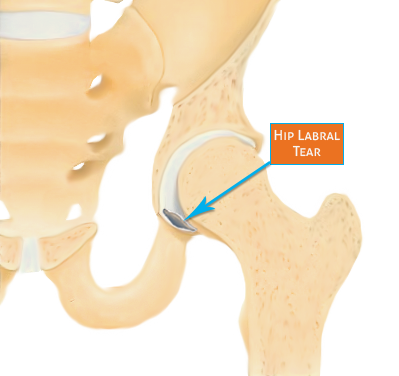 Once your pain, strength, and motion improve, you will be able to slowly return to more demanding activities. Based on your unique needs and goals, your physical therapist will create a series of activities for you to do. They will help you learn how to use and move your body correctly and safely during your daily, work, and sports activities.
Once your pain, strength, and motion improve, you will be able to slowly return to more demanding activities. Based on your unique needs and goals, your physical therapist will create a series of activities for you to do. They will help you learn how to use and move your body correctly and safely during your daily, work, and sports activities.
Following Surgery
Surgery for hip impingement is performed using arthroscopy. Arthroscopy is minimally invasive and only requires small incisions in the skin. The surgeon will insert pencil-sized instruments into the joint to repair the damage. The surgeon may perform one or more techniques during surgery as needed.
After surgery, physical therapy will depend on the type of procedure performed. On your first visit with a physical therapist, they will go over your history thoroughly and perform a physical exam (within the limits set by your surgeon). During later visits, your physical therapist may provide the following treatments:
Education. Your physical therapist will educate you about your condition.
Your physical therapist will educate you about your condition.
- Postsurgical wound care: You will learn how to watch for signs of infection and learn how to keep your wound clean.
- Restrictions: Your physical therapist will go over any restrictions your surgeon has given you.
- Brace: Your physical therapist will teach you how to put on and remove any brace prescribed by your surgeon, and explain the reasons for using the brace.
Gait training. Your physical therapist will teach you how to walk with an assistive device (such as crutches or a walker) if needed. They will teach you how to avoid putting too much weight on your hip as it heals.
Range-of-motion exercises. Initially, hip range-of-motion exercises will be gently performed for you by your physical therapist. As you heal, your physical therapist may teach you active range-of-motion exercises for you to do on your own.
Flexibility exercises. Your physical therapist may teach you stretching exercises for the entire lower extremity and your trunk.
Strengthening exercises. At the appropriate time, your physical therapist will teach you how to do the following types of strengthening exercises:
- Isometric strengthening: tensing and relaxing your muscles.
- Isotonic strengthening: tensing and moving your muscles (such as bending your knee).
- Eccentric strengthening: tensing your muscles to move your hip joint safely.
Balance and coordination exercises. Your physical therapist will teach you how exercises to improve your balance and coordination.
Job- or activity-specific training. As you regain strength and movement, your physical therapist may add more specific exercises. Doing these will help prepare you to return to your work and sports activities.
Most people return to normal daily activities around three months after surgery. Returning to high-level activities and sports may take four to six months after surgery. Your physical therapist will recommend a gradual return to your regular activities based on your condition. Research shows that about 74% of athletes return to their prior playing ability after rehabilitation from this type of hip surgery. Each person is different. How long it takes to return to your desired activities will depend on the surgery performed and your sport.
Arthritis of the Hip – Types, Symptoms, Diagnosis, Treatment
- Home
- Patient Care
- Services
- Hip & Knee
- Adult Reconstruction and Hip Preservation Overview
- Arthritis of the Hip
Arthritis is one of the most common causes of pain in the hip. Arthritis is a progressive disorder, which means that it typically starts gradually and gets worse with time. The term arthritis literally means “inflammation of the joint.”
There are different types of arthritis that can affect the hip. The type of arthritis you have may affect your treatment options.
Types of Arthritis
There are five main types of arthritis that can affect the hip joint. They are:
- Osteoarthritis
- Rheumatoid arthritis
- Ankylosing spondylitis
- Systemic lupus erythematosus
- Psoriatic arthritis
There is no cure for any type of arthritis, but there are ways to treat the pain and other associated symptoms.
Osteoarthritis
Osteoarthritis means “arthritis of the bone” and is the most common form of arthritis. It is often described as the result of wear and tear on the joints, which explains why it is more common in older than younger people.
The hip joint consists of the ball-shaped end of the thigh bone (femoral head) which fits into the hip socket (acetabular socket). The inside of this ball-and-socket joint is lined with smooth cartilage to help the joint move easily. If this smooth cartilage wears away, the remaining rough surfaces of the ball-and-socket grind against each other, causing pain. Over time, osteoarthritis can degenerate or permanently damage the joint.
Osteoarthritis of the hip (and other parts of the body) has been associated with the following:
- Structural problems with the hip joint (hip dysplasia, femoroacetabular impingement)
- Advancing age
- Obesity
- Previous damage or injury to the hip
However, osteoarthritis may develop in people without these risk factors.
Figure a
Figure b
|
Rheumatoid Arthritis
Rheumatoid arthritis is a systemic disorder, that is, it affects your entire body and not just the hip joint. The inflammation is related to an immune system response rather than wear and tear.
The hip joint, like other joints in the body, is protected by a special capsule that completely surrounds the joint. This capsule has a special lining (the synovial lining) and is filled with lubricant (joint fluid) that helps the joint move smoothly. Rheumatoid arthritis typically causes a swelling of the synovial lining. This causes pain and swelling, but eventually, rheumatoid arthritis can cause the bone and cartilage of the joint itself to deteriorate.
Rheumatoid arthritis can occur in people of all ages, including children (where it is known as juvenile rheumatoid arthritis), and is more common in women than men. Unlike osteoarthritis of the hip, which may occur only in one hip, rheumatoid arthritis typically occurs in both hips at the same time (and possibly other joints). Rheumatoid arthritis is also associated with overall weakness and fatigue. Medications to treat rheumatoid arthritis continue to improve.
Ankylosing spondylitis
Ankylosing spondylitis is a chronic inflammation of the spine and sacroiliac joint (the joint where the spine meets the pelvis) which can sometimes cause inflammation of the hip joint. Ankylosing spondylitis can occur in people of all ages, including children, and typically starts in a person between the ages of 17 and 35. It is more common in men than women.
It is typical for people with ankylosing spondylitis to experience flares, when the condition is worse, followed by periods of remission with mild to no symptoms.
Systemic Lupus Erythematosus
Systemic lupus erythematosus or lupus is a systemic autoimmune disorder that can affect any part of the body, including the hip joint. If lupus strikes the hip, inflammation and damage to the joint can occur. Lupus can occur in people of all ages but it is most common in women aged 15 to 35.
Psoriatic Arthritis
As the name sounds, this type of arthritis is related to the skin condition psoriasis. Psoriatic arthritis causes joint pain, swelling, and stiffness and can affect any joint in the body, including the hip. Most people with psoriatic arthritis have the skin condition first (scaly red patches of skin) but it is possible to develop psoriatic arthritis before the skin condition occurs.
Arthritis Symptoms
Regardless of the type of arthritis, symptoms of hip arthritis include:
- Pain in the hip joint that may include pain in the groin, outer thigh, or buttocks
- Pain that is typically worse in the morning and lessens with activity
- Difficulty walking or walking with a limp
- Pain that worsens with vigorous or extended activity
- Stiffness in the hip or limited range of motion
In patients with rheumatoid arthritis or lupus, fatigue and weakness may also occur. Arthritis often occurs in flares with remission, but some people experience a relatively stable level of pain without flares.
Any type of arthritis can involve more than one joint in the body, so a person with osteoarthritis of the hands may develop the condition in the hip as well. Rheumatoid arthritis and lupus typically affect both hips at the same time, while osteoarthritis and psoriatic arthritis may occur in one hip but not the other.
Diagnosis
If you suspect you may have arthritis of the hip, the most important first step is an accurate diagnosis. Dr. Clohisy and his colleagues are experts in arthritis of the hip. A diagnostic evaluation will likely include the following:
- Your medical history, including where you experience pain and if you limp at times
- A physical examination, in particular to see how well you can move the hip
- Radiographs or X-rays to determine if there are any abnormalities in the joint
- Blood tests to determine antibodies that may be associated with a specific type of arthritis (only if needed).
Treatment
The Joint Preservation, Resurfacing and Replacement department will prescribe the type of treatment that is appropriate for your particular type of arthritis and other factors, including your overall health, your age, and your personal preferences.
Nonsurgical treatment of arthritis of the hip may include any of the following:
- Anti-inflammatory medications, such as ibuprofen
- Corticosteroids, injections to block the inflammation in the joint.
- Physical therapy or exercise programs to improve flexibility, build up strength, and maintain muscle tone. Swimming, in particular, is an excellent exercise for arthritis sufferers.
- Some types of arthritis may respond to new categories of drugs known as symptom-modifying antirheumatic drugs (SMARDs) and disease-modifying antirheumatic drugs (DMARDs). These are powerful new drugs, which are not appropriate for everyone with arthritis.
- Devices such as canes or walkers to make it easier and safer for you to walk.
Lifestyle modifications can also help to reduce the symptoms of arthritis of the hip. These include:
- Maintaining a healthy weight (and losing weight, if necessary)
- Appropriate pain management
- Changing activities to minimize stress on the hip
- Exercising to build up strength
Many people with arthritis with the hip are candidates for surgery. Surgery can help to reduce pain, enhance quality of life, and improve your ability to perform everyday activities with fewer or no restrictions.
- Total hip replacement may be appropriate if the hip joint is severely damaged
- Osteotomy surgery may be appropriate in less severe cases. Hip osteotomy surgery cuts and repositions the joint surfaces in such a way that it allows the healthy part of the hip joint to bear most of the body’s weight. Only a select group of patients are candidates for osteotomy surgery.
If you are an appropriate candidate for hip surgery, the risks and benefits of your surgical options will be discussed.
Important Considerations for People with Arthritis of the Hip
There is no cure for arthritis. Typically, it starts gradually and worsens over time. Eventually, all forms of arthritis of the hip may permanently damage the hip joint. While osteoarthritis is more common in older people, there are forms of arthritis that affect younger people.
Fortunately, there are things that can be done to help minimize the effect of arthritis, and we are glad to discuss these option.
Arthritis Statistics
- 22% of the U.S. population in 2010 reported some form of arthritis
- Among adults over 65, 50% have some form of arthritis
- The most common form of arthritis is osteoarthritis
- Weight loss of just 11 pounds can reduce a woman’s risk of developing knee arthritis by 50%
- Of working age people (ages 18 to 64), one-third of those who had arthritis reported it limited their ability to work
(Statistics from Centers for Disease Control and Prevention)
Arthritis of the Hip | Cedars-Sinai
Not what you’re looking for?
Overview
Arthritis of the hip is a condition in which there is loss of the cartilage of the head of the thighbone and of the cup-shaped socket of the pelvis where the thighbone fits into the joint (the acetabulum). This cartilage allows the bone to glide inside the socket of the joint as you move. When the cartilage is damaged or lost, bone rubs against bone causing pain, tenderness and swelling (inflammation) and limitation of your ability to move freely.
Symptoms
Because of the damage to the cartilage, people with arthritis may feel as though their hip is stiff and their motion is limited. Sometimes people feel a catching or clicking within the hip. The pain usually gets worse when the hip joint is strained by walking long distances, standing for a long time or climbing stairs. The pain is usually felt in the groin, but also may be felt on the side of the hip, the buttock and sometimes into the knee.
Causes and Risk Factors
Arthritis of the hip usually occurs in people as they enter their 60’s and 70’s. This varies depending on your weight, activity level and the structure of your unique hip joint. Arthritis may be caused by many factors, including simple wear and tear, inflammatory disorders such as lupus or rheumatoid arthritis, infections or injury.
Diagnosis
Loss of cartilage can be seen on X-ray as a loss of the space between the two ends of bone.
Treatment
Depending on the severity of arthritis and your age, hip arthritis may be managed in a number of different ways including any or a combination of the following:
- Conservative care
- Pain management
- Losing weight to reduce the forces on your hip joint
- Changing your activities to avoid strain on your hip
- Using assistive devices such as a cane in your opposite hand
- Surgery
- Hip replacement
An osteotomy is a good option if you are young and the arthritis is limited to a small area of the hip joint. It allows the surgeon to rotate the arthritic bone away from the hip joint, so the weight is carried on the healthier parts of the hip joint. The advantage of this surgery is that the patient’s own hip joint is kept, and can potentially give many years of pain relief without the disadvantages of an artificial hip. The disadvantages are that it takes long for rehabilitation and that arthritis may develop in the newly aligned hip.
Hip replacement surgery involves cutting away the arthritic bone and replacing it with an artificial joint. Both the ball (at the top of the thighbone) and the socket (at the bottom side of the pelvic bone) are replaced, usually with a metal ball and a plastic socket. The ball is placed on a stem placed inside the femur (thigh bone), with or without cement. The socket is inserted within the natural joint socket of the pelvis (the acetabulum) after the arthritic surface is removed.
© 2000-2021 The StayWell Company, LLC. All rights reserved. This information is not intended as a substitute for professional medical care. Always follow your healthcare professional’s instructions.
Not what you’re looking for?
90,000 In motion without pain. Why is coxarthrosis dangerous and how to prevent it | Health | HEALTH
Increasingly, patients come to doctors with complaints of joint pain. The number of such patients is increasing by 10-12% every year, the doctors calculated. Coxarthrosis is considered one of the formidable and dangerous diseases – it affects the hip joints.
Do not step
The symptoms of coxarthrosis are easy to determine: the patient will complain of pain in the knees, groin, hips, buttocks, and hip joint.When going up and down stairs, discomfort will be felt, possibly a slight limp. Often, patients complain that it becomes difficult for them to move their legs – there is a feeling that something is holding them down, preventing them from moving quickly. In this case, the muscles of the thigh atrophy, the leg may even become shorter.
“The symptoms of coxarthrosis appear gradually,” says therapist, rheumatologist Igor Kisilev. – A person periodically suffers from pain in the hip joints, sometimes in the knees.But few go to doctors at this stage – the rest hope that everything will go away by itself. ”
Coxarthrosis is a gradual destruction of the cartilaginous tissue lining the capsule of the hip joint. Acute pains at an early stage of coxarthrosis really sometimes go away quickly on their own, without medication.
Patients often start sounding the alarm when it hurts even to get up on their feet. If the pain radiates to the thigh, groin, knees, if you limp a little, you need at least an examination by a specialist!
Among the risk factors are heredity, any previous leg injuries, age over 40.Over the years, joints become less elastic, less mobile, and recover from injuries more and more slowly. Their health is by no means conducive to a sedentary lifestyle and being overweight. According to doctors’ observations, women suffer from coxarthrosis a little more often than men.
“The main thing that I would like to draw the attention of Nizhny Novgorod residents to: do not diagnose yourself if you are not a doctor! – continues Igor Kiselev. – Do not listen to a neighbor who says that in the hospital they will immediately rush you to have an operation! It is possible to restore the function of any joint, not only the hip joint, using non-surgical methods.Surgery is usually suggested by a doctor at a later stage. ”
In the first and second stages, coxarthrosis is treated with various drugs, massage is often prescribed. Sports are also helpful, but exercise and exercise should be discussed with your doctor.
Everyone in the park
If a person wants the coxarthrosis seen in the early stages not to return after a course of treatment, he will have to change his lifestyle. In order for our joints to function properly, they need a reasonable amount of stress.Instead of an evening on the sofa watching the TV or at the bar with a beer, choose a walk to the park. Doctors believe that constant small loads help the best. It is not necessary to go jogging every morning – it is enough to regularly walk a certain distance.
It should be remembered that exhausting training for joint diseases is contraindicated. You should also avoid heavy stress on the joints when doing housework or on your favorite beds.
“It has been noticed that those who love to dance hardly suffer from coxarthrosis,” adds Igor Kiselyov.- I’m not talking about professional dancers now, but about those who just move for their own pleasure. The joints are capricious, they do not like either excessive load or its complete absence. ”
How to avoid illness?
- Eat more vegetables and fish, less flour, sweets and meat.
- Watch your weight.
- Walk, dance, bike more often.
- Do not abuse alcohol.
90,000 hip elbow knee in Omsk, prices 2021
Cost
Diseases of the joints manifest themselves at any age.They often entail a long-term loss of performance. Treatment of joint diseases is carried out in a comprehensive manner and is often accompanied by massage procedures that allow a long-term therapeutic effect to be achieved.
Joint massage reduces reflex muscle hypertonicity, prevents muscle atrophy, promotes joint mobility, and improves local interstitial metabolism.
Massage of the hip joint
This type is used in the treatment of diseases of the hip joints of various kinds, including as post-traumatic therapy.It is used as one of the components of complex therapy and is carried out at the recovery stage, when the period of acute pain has been overcome, along with such procedures as acupuncture and physiotherapy exercises. Since the hip joint is “hidden” quite deeply, it acts on the front and back of the thigh, limiting itself to only massaging the muscles that surround the joint.
Massage of the elbow joint
The elbow joints, as well as the joints of the legs, and other joints of the hands are susceptible to various diseases, for example, arthrosis; massage is part of the comprehensive treatment.Athletes and other people whose work is related to physical exertion on the hands often develop deformation of the elbow joints, in which massage is also indicated. It is also indicated for rehabilitation after fractures and injuries of the elbow.
Massage of the elbow joint increases joint mobility, stimulates blood circulation, and relaxes. It does not in any way affect the elbow itself, as this can lead to increased pain. The area near the elbow is massaged with gentle movements from top to bottom.In this case, the elbow is in a bent position.
Massage of the knee joint
Knee joints bear considerable stress when walking, and are also prone to injury from falls. In addition, it is the knee joints that are most often affected by arthrosis and arthritis, as well as rheumatism and other joint diseases, including age-related changes. In the complex treatment of diseases of the knee joints, along with drug treatment and physiotherapy exercises, knee joint massage is used. Therapeutic massage of the knee joint is carried out by rubbing, kneading or stroking the periarticular zone.
Where to do joint massage in Omsk?
By contacting our clinic in Omsk, you can massage the knee, elbow or hip joints. Our specialists are highly experienced and highly qualified.
How much does a joint massage cost?
Joint massage (one) – 10 minutes
The cost is determined by both the impact area and the duration of the course, as well as the number of courses. Achieving the maximum therapeutic effect is possible only after a course of massage, the duration of which is determined by the attending physician and depends on the nature of the disease.
✅ how to smear joints with pain
Tags: means for compresses for pain in joints, where to buy what to smear joints with pain, cream wax is healthy for joints to buy in Balakovo.
joints ache what injections, jaw joint hurts what to do, diabetes aches joints, pain and swelling of the joints, cream wax is healthy from cellulite for gv
Functional principle
With age, joints began to hurt all over my body, of course, but I especially suffer from my knees.When my legs became weak, I fell several times, hurt me badly. I did massage, compresses, tried everything I knew. Once my granddaughter brought me an ointment, that is, Zdorov’s cream-wax, explained how many times a day to apply. Began to apply with self-massage. I am very pleased with the result, practically this ointment lifted me to my feet. Now I’m not rubbing it in on debt, the result is the same. Now I use it regularly, the pains go away. I ordered myself more. The Zdorov cream was created by Russian scientists. Developing a new remedy for joint diseases, they relied on the practice of traditional medicine and on the results of the latest scientific research in the field of arthrology.The cream contains only natural ingredients. They have been carefully selected over the years. Scientists gave preference to the most effective products and took into account their influence on each other. The precisely calculated ratio of the components made it possible to create an effective remedy.
Official website how to smear joints for pain
Composition
Ointment for pain in the joints of the knees. Knee pain can develop for a variety of reasons. But it must be borne in mind that they cannot be smeared immediately after injury.Because after impact or stretching, it is desirable to cool the joint. Most joint diseases are difficult to treat. Moreover, they are always caused by painful sensations in this respect it is important to understand. Knee pain is a terrible feeling that prevents you from living a fulfilling life. Naturally, you need to fight it. For this, not only oral medications are used, but also ointments. How to smear sore joints. Joint diseases are quite common. Since with severe pain in the joint, there is a restriction in movement, then ointments and gels are most often designed specifically to relieve pain.A warming ointment for pain in the knee joint can be applied to get rid of pain after. Ointments for pain in the knee joint can be of different effects and composition. How to smear a sore knee, the doctor will tell you. But in order to maintain the joints of the knees, all other joints, including the spine, it is very important to move. Page content. Mechanical overload is relieved, reducing knee pain and increasing knee mobility.Ketonal cream helps well from the joint. I smear it for severe pain. What ointment to use for pain in the joints of the knees. In the hospital, they advised me to smear ointments with Dimexide, it helps them to be absorbed, and the effect is better. Treatment begins with inflammation, which is always present with pain in the joints of the legs. Stir the mixture thoroughly again, smear the joints of the legs. Can help you forget about pain and make movement easier! There are contraindications. Check with your doctor. Effectively relieve inflammation, swelling and pain at home.Find out how. Cure at home without surgery and medication! on . FOR JOINTS The result is guaranteed for a long time!
Effect from application
For pain in the knee joints, he was treated with such a vigorous remedy: 16 pods of red pepper, 160 ml of kerosene and 150 ml of unrefined sunflower oil, he insisted for 12 days in the cellar, shaking the bottle daily. Then he smeared the sore spots with a mixture for the whole night, and in the morning he put on warm pants and an angora wool sweater. But it only lasted for 2 weeks, then burns appeared on the skin, dermatitis appeared.The cream-wax Zdorov, which he heard about in the advertisement, relieved of joint pains and simultaneous skin problems. At first I did not believe in its effectiveness, I thought it was a deception, a divorce, but I bought it anyway. Already on the 5th day of application, the skin stopped itching and peeling, joint pains when walking stopped worrying, but before the rain there is still discomfort, especially in the knees. This is how he is inside. If it hurts you to stand, it is problematic to move, or you experience discomfort in the joints during exercise, then you should immediately take action.
Expert opinion
A product based on natural ingredients acts mildly, like all medicines of natural origin. It will be appreciated by people who are supporters of effective, natural and safe treatment.
The joints of the arms and legs hurt – treatment with folk remedies. Joint pains in various parts of the human body appear due to many factors. If the joints of the arms and legs hurt, the causes, symptoms, treatment regimens should first of all be discussed with specialists (rheumatologist Treatment of arthritis.Arthritis is most often severe pain in the joints of the hands. What to do in this situation. Common reasons: why there are pain in the joints of the hands and feet. The nature of pain in known diseases. How to treat pain. The treatment of each specific ailment is individual. If you have pains in the joints of the legs and arms – do not hesitate. Treatment of pain in the joints of the upper and lower extremities. What to do if the joints of the arms and legs are very sore, and the pain does not pass and aching? Before you go to the doctor to relieve your torment. When joints of arms and legs hurt, how to treat them? If the patient turns to the doctor on time, during the period when the pain has just declared itself, the treatment will be more effective, and the patient will recover quickly.Cutting, sharp, dull, aching – pain in the joints of the arms and legs can be of any plan. Then, severe joint pain disappears along with other symptoms. Remission occurs even in the absence of proper treatment. Causes and treatment of pain in the joints of the hands and feet. The human body, like a well-arranged mechanism, will serve properly and reliably with proper care. Symptoms: at the beginning of the disease, a person feels excruciating burning pain in the joints of the legs, if you do not take action, then soon there will be an effective treatment for ailments of the hands and lower extremities.What to do if the joints of the arms and legs hurt. Any manifestation of pain is always unpleasant. Particular discomfort is caused by soreness in the arms and legs – a person has limited mobility. If many joints of the arms and legs hurt, then complex treatment is most often used. The first thing to do in such a situation is to alleviate the patient’s condition with the help of pain relievers. The gel will help relieve pain and inflammation and ease movement. Light texture! There are contraindications. Check with your doctor.Easy to digest. High quality raw materials. Penetrates deep into the joint and eliminates chronic pain for up to 12 hours There are contraindications. Check with your doctor. A wise solution for joint, back and muscle pain. With viper venom. There are contraindications. Check with your doctor.
Purpose
A very large percentage of people have to deal with ailments of the musculoskeletal system and diseases affecting the joints. Most often, these problems are observed in the elderly, as well as in the category of persons who are forced to lead a sedentary lifestyle.In addition, many people, and especially athletes, are faced with injuries of the OD apparatus, since regular and excessive physical exertion does not pass without leaving a trace.
Hip joint: pain, treatment, concomitant diseases Alexander Romashina. Why do legs hurt from hip to foot? pain in the hip Irina Moiseeva. Pain in the leg radiates to the buttock: how to treat? Elena Balycheva. Causes of pain in the hip joint, radiating to the leg: symptoms of diseases, treatment. Content. You cannot ignore the aching pain that radiates to the leg.Causes of pain in the hip joint: strong, radiating to the leg, groin, lying down, while sitting, what to do. The hip joint (HJ) is a large mechanism for maintaining correct posture. Pain in the hip joint does not always indicate problems in the joint itself. The first symptoms of pain when moving, while running, which radiates to the leg, may indicate the following. The article discusses what pathologies cause pain in the hip joint, as well as what will help get rid of them.Low back pain radiating to the leg. Pain in the right leg, left, felt by both lower extremities, is a serious signal from the body that there are disorders in the hip joint, spine or. If a person continues to hurt on the right or left side in the area of the hip joint, then the pain in the hip joint, radiating to the leg, may subside after the doctor prescribes different methods of therapy. Seven causes of pain in the hip joint, radiating to the leg Types of pain radiating to the leg.In case of pain in the hip joint, radiating to the leg, you can make an independent assessment of the functions of the limb before consulting with the surgeon. The nature of the pain With this disease, aching pain is localized in the hip joint and radiates to the leg and groin area. Very often, the discomfort extends to the front of the thigh and knee. For the reduction of acute joint pain. There are contraindications. Check with your doctor. Effectively relieve inflammation, swelling and pain at home. Find out how. Heal a joint at home without surgery and medication! on .Penetrates deep into the joint and eliminates chronic pain for up to 12 hours There are contraindications. Check with your doctor.
How to order?
Fill out the form for consultation and ordering how to lubricate joints in case of pain. The operator will clarify all the details with you and we will send your order. In 1-10 days you will receive the parcel and pay for it upon receipt.
How to lubricate joints for pain . hip joint pains folk remedies. Reviews, instructions for use, composition and properties.
Traumatic dislocation of the hip. The main sign of hip dislocation is a sharp pain in the hip joint, which does not allow movement, the patient does not sit or stand up. In addition, pain in the hip joint and leg can come from the lower back, while radiating to the groin and buttocks. The pain is localized in the thigh, it can radiate to the groin and down to the knee. Over time, the full range of motion is lost. The hip joint is considered to be the largest joint. And he is also the most loaded in the human body.It is located in the area of the joint of the thigh bone, as well as the pelvis. Pain in the hip joint has a variety of causes. X-ray of the spine, hip region; tomography of the spine, pelvis and hip. Pain in the hip joint: causes and treatment. The hip joint (HJ) is one of the largest in the human body. Pain in the hip joint with arthritis is sharp and shooting. Discomfort appears in the groin, front and back of the thigh. Pain in the hip joint usually occurs in response to inflammation and damage to the anatomical structures that make up the joint.Stage I: pain in the hip joint occurs after prolonged walking, which is characterized by irradiation to the groin area. Sometimes painful sensations torment the patient at night. Hypotrophy of the thigh muscles in this one. Why does the hip joint hurt? There is more than one cause of hip pain in women. This is possible with blood poisoning, malignant formations of the pelvic organs, with phlegmon of the thigh, abscess and furunculosis. Causes of pain in the hip joint. First, let’s take a look at what the hip joint is.As a result, the hip bones diverge, and pain occurs in the pregnant woman in the thigh area. The location of the hip joint at the junction of the pelvis and femur provides freedom of movement of the lower limb in all planes. Hip pain in pregnant women. Often during pregnancy, a leg hurts in the hip joint. Easy to digest. High quality raw materials. The gel will help relieve pain and inflammation and ease movement. Light texture! There are contraindications. Check with your doctor. Penetrates deep into the joint and eliminates chronic pain for up to 12 hours There are contraindications.Check with your doctor. For the reduction of acute joint pain. There are contraindications. Check with your doctor.
Official website how to smear joints for pain
✅ You can buy-what to smear joints with pain in such countries as:
Russia, Belarus, Kazakhstan, Kyrgyzstan, Moldova, Uzbekistan, Ukraine Armenia
Healthy cream was created by Russian scientists. Developing a new remedy for joint diseases, they relied on the practice of traditional medicine and on the results of the latest scientific research in the field of arthrology.The cream contains only natural ingredients. They have been carefully selected over the years. Scientists gave preference to the most effective products and took into account their influence on each other. The precisely calculated ratio of the components made it possible to create an effective remedy. Traumatic dislocation of the hip. The main sign of hip dislocation is a sharp pain in the hip joint, which does not allow movement, the patient does not sit or stand up. In addition, pain in the hip joint and leg can come from the lower back, while radiating to the groin and buttocks.The pain is localized in the thigh, it can radiate to the groin and down to the knee. Over time, the full range of motion is lost. The hip joint is considered to be the largest joint. And he is also the most loaded in the human body. It is located in the area of the joint of the thigh bone, as well as the pelvis. Pain in the hip joint has a variety of causes. X-ray of the spine, hip region; tomography of the spine, pelvis and hip. Pain in the hip joint: causes and treatment. The hip joint (HJ) is one of the largest in the human body.Pain in the hip joint with arthritis is sharp and shooting. Discomfort appears in the groin, front and back of the thigh. Pain in the hip joint usually occurs in response to inflammation and damage to the anatomical structures that make up the joint. Stage I: pain in the hip joint occurs after prolonged walking, which is characterized by irradiation to the groin area. Sometimes painful sensations torment the patient at night. Hypotrophy of the thigh muscles in this one. Why does the hip joint hurt?There is more than one cause of hip pain in women. This is possible with blood poisoning, malignant formations of the pelvic organs, with phlegmon of the thigh, abscess and furunculosis. Causes of pain in the hip joint. First, let’s take a look at what the hip joint is. As a result, the hip bones diverge, and pain occurs in the pregnant woman in the thigh area. The location of the hip joint at the junction of the pelvis and femur provides freedom of movement of the lower limb in all planes.Hip pain in pregnant women. Often during pregnancy, a leg hurts in the hip joint. Easy to digest. High quality raw materials. The gel will help relieve pain and inflammation and ease movement. Light texture! There are contraindications. Check with your doctor. Penetrates deep into the joint and eliminates chronic pain for up to 12 hours There are contraindications. Check with your doctor. For the reduction of acute joint pain. There are contraindications. Check with your doctor. For pain in the knee joints, he was treated with such a vigorous remedy: 16 pods of red pepper, 160 ml of kerosene and 150 ml of unrefined sunflower oil, he insisted for 12 days in the cellar, shaking the bottle daily.Then he smeared the sore spots with a mixture for the whole night, and in the morning he put on warm pants and an angora wool sweater. But it only lasted for 2 weeks, then burns appeared on the skin, dermatitis appeared. The cream-wax Zdorov, which he heard about in the advertisement, relieved of joint pains and simultaneous skin problems. At first I did not believe in its effectiveness, I thought it was a deception, a divorce, but I bought it anyway. Already on the 5th day of application, the skin stopped itching and peeling, joint pains when walking stopped worrying, but before the rain there is still discomfort, especially in the knees.This is how he is inside.
With age, joints began to hurt all over my body, of course, but I especially suffer from my knees. When my legs became weak, I fell several times, hurt me badly. I did massage, compresses, tried everything I knew. Once my granddaughter brought me an ointment, that is, Zdorov’s cream-wax, explained how many times a day to apply. Began to apply with self-massage. I am very pleased with the result, practically this ointment lifted me to my feet. Now I’m not rubbing it in on debt, the result is the same. Now I use it regularly, the pains go away.I ordered myself more.
To avoid buying a fake, it is better to order the product on the manufacturer’s official website. There you will find detailed information about the product and the price of Zdorov cream. Buying from the manufacturer can save you time and money. After all, the cost of the goods does not include the costs of the services of retail chains. When drugs are sold at a pharmacy, their cost increases.
For pain in the knee joints he was treated with such a vigorous remedy: 16 pods of red pepper, 160 ml of kerosene and 150 ml of unrefined sunflower oil, he insisted for 12 days in the cellar, shaking the bottle daily.Then he smeared the sore spots with a mixture for the whole night, and in the morning he put on warm pants and an angora wool sweater. But it only lasted for 2 weeks, then burns appeared on the skin, dermatitis appeared. The cream-wax Zdorov, which he heard about in the advertisement, relieved of joint pains and simultaneous skin problems. At first I did not believe in its effectiveness, I thought it was a deception, a divorce, but I bought it anyway. Already on the 5th day of application, the skin stopped itching and peeling, joint pains when walking stopped worrying, but before the rain there is still discomfort, especially in the knees.This is how he is inside.
Hip surgery in Germany and Switzerland
Hip anatomy
The thigh, or rather the hip joint, forms the connection between the torso and the legs and consists of two bony structures. On the one hand, from the massive pelvic bone, which contains the so-called glenoid cavity. This depression is not, as the name suggests, flat. You can imagine that it looks more like a hemispherical imprint. In this cavity is the femur (femur).In this case, they also speak of the head of the femur, which is connected through the so-called neck to the rest of the greater femur.
The head and neck are at a certain angle to the remaining vertically running femur (SHD angle), which usually ranges from 120 ° to 140 ° (depending on age). Because of this angle, the head of the femur can fit into the slightly forward and downward glenoid cavity. Due to the large bone contact surface, as well as the significant closure of the head of the joint by the connecting cavity, anatomically, the joint is called nut-shaped.The surfaces of the two bones of the joint are covered with vision, which allows movement with a low degree of friction.
The joint is additionally stabilized by a connective tissue articular lip (labrum), located at the edge of the acetabulum, as well as by an elastic ligamentous apparatus that runs from the pelvic bone to the femur and thus closes the joint.
What diseases cause hip pain?
Various diseases can cause pain in the hip joint.So in children, due to abnormal development (hip dysplasia), problems with the hip joint can occur, which, if left untreated, can lead to dysfunction and pain. An example of such a pathology is an underdeveloped cup of the acetabulum. However, since such abnormalities are examined in newborns in Germany and are usually amenable to nonsurgical treatment, this is not the main cause of hip pain.
Of course, broken bones in the hip area can also cause pain.This is especially true for a hip fracture, which can happen – especially in older people – when falling on the hip.
Arthritis (acute inflammation of the joints) of the hip joint can also lead to severe pain. This inflammation can be caused by bacteria (such as after surgery) or even an autoimmune reaction (such as rheumatoid arthritis).
In the case of hip dysplasia, as well as a bone fracture or inflammation, in the absence or impossibility of adequate therapy, wear of the joint (osteoarthritis) may occur over time.
Osteoarthritis gradually destroys the cartilaginous surface of the joint, which causes friction during movement and, accordingly, pain. Hip arthrosis can occur even without the indicated reasons. Overweight contributes to the wear and tear of cartilage.
Arthrosis of the hip joint (coxarthrosis)
is a very common disease, especially in old age. In extreme cases, surgery may be required.
Hip surgery: an overview of the most important operations
In Germany, hip surgery is the main part of all joint operations.In 2016 alone, 233,000 hip joint endoprostheses were implanted. Arthrosis of the hip joint causes wear and tear on the articular cartilage, which often results in pain and difficulty in movement.
In addition to joint replacement, there are also minimally invasive joint-preserving arthroscopic surgeries (keyhole arthroscopy).
Replacement of the surface of the hip joint
McMinn Hip Surface Replacement is an alternative to total joint replacement.With this method, only that part of the joint that is affected by arthrosis is removed or replaced, and the bone is operated with maximum care. Here, like a dental crown, the articular surfaces of the femoral head and acetabulum are covered or replaced with a metal implant. The advantages over conventional total prostheses are that in this way a shorter recovery time and return to daily life are achieved and a very natural joint position is created.This manifests itself in a better range and sensation of movement by the patient.
This operation is usually used in elderly patients with arthrosis (less than 65 years old) with a still stable femoral neck, who experience pain when walking and moving and want to return to a mobile life. With a bone-preserving technique, in the event of wear and tear, a conventional hip replacement can also be inserted. The disadvantage of this method is the lack of long-term results (more than 20 years).
Hip joint endoprosthesis
Classical
hip endoprosthesis
is the most commonly performed hip surgery. Patients suffering from coxarthrosis (arthrosis in the hip joint), in addition to pain when moving, also face increased joint stiffness and decreased mobility. There are various types of implants and methods for replacing the acetabulum (Acetabulum) and the femoral head.
Studies show very good long-term results in terms of the strength of the prostheses (about 20 years) and patient benefits in terms of improved pain and quality of life.
Implants can be inserted into the joint either in the traditional way, through a relatively large incision with great damage to soft tissues, but at the same time with good visibility of the joint for the surgeon, or minimally invasive – with tissue preservation.
In contrast to the replacement of the surface of the hip joint, in which the bone tissue is operated sparingly, in endoprosthetics, the entire femoral head is replaced with a metal or ceramic implant.The femoral neck is inserted through a long rod into the femur, where it then grows in when the bone heals or is fixed with cement. Also, when replacing the glenoid cavity, more bone tissue is removed than with a minimally invasive procedure, the new prosthesis is then fixed in the pelvic bone, in rare cases it is cemented.
Replacement of the hip prosthesis
Hip replacement surgery
can be performed for various reasons.The most common are:
- wear of the sliding surfaces of the implants (the prosthesis is over 20 years old)
- periprosthetic fracture (bone fracture in the area of the prosthesis)
- bone loss during prosthetics
- endoprosthesis infection
- incorrect installation of the prosthesis
If symptoms such as groin pain, hip pain, leg length changes, or instability develop after having a hip replacement, you should see your doctor.
Hip replacement should be performed by an experienced surgeon as it is not an easy routine procedure. Here, depending on the cause of the patient’s symptoms, an individual approach to replacing the prosthesis is considered.
Hip arthroscopy
Hip arthroscopy is an endoscopic examination or treatment of the hip joint
… This is a minimally invasive surgical treatment through small skin incisions.The surgeon inserts the camera and surgical instruments into the joint and can thus perform the procedure with very little soft tissue damage and minor scarring. In addition to removing loose articular bodies, inflamed mucous membranes or damaged parts of connective tissue, cartilage or bone surgery can be performed.
Which doctors and clinics are specialists in the treatment of the hip joint in Germany, Switzerland and Austria?
Hip physicians are specialists in orthopedics and traumatology.There are also clinics specializing in such problems. To find such a clinic nearby, it is best to ask your family doctor or orthopedist.
We will help you find a specialist to treat your disease. All of the listed doctors and clinics have been reviewed by us for their high qualifications in the field of hip surgery. They are waiting for your questions or requests regarding treatment.
Sources:
Orthopedics and Traumatology Duale Reihe; Nitard, Pfeil, Biberthaler; 7th edition Thieme Verlag (Duale Reihe Orthopädie und Unfallchirurgie; Niethard, Pfeil, Biberthaler; 7.Auflage Thieme Verlag)
Atlas of Anatomy Prometheus; Schunke, Schulte, Schumager; 3rd edition Thieme Verlag (Prometheus Lernatlas der Anatomie; Schünke, Schulte, Schumacher; 3. Auflage Thieme Verlag)
Treatment of inflammation of the hip joint in Kurkino
Does your thigh hurt? Do you feel discomfort when bending over, performing basic physical exercises, or walking? Is the pain accompanied by burning, redness of the skin in the hip joint? You do not need to endure it and, moreover, suppress the symptoms with drugs.It is important to undergo diagnostics and comprehensive treatment so that the pain no longer bothers you.
Specialists of the Freedom of Movement Medical Center will make an accurate diagnosis, prescribe a course of treatment and prevention, so that you feel relief as soon as possible.
Inflammation of the hip joint is a disease in which the functional base of the joint is affected, that is, the ligaments and cartilage. Through the bloodstream, microbes enter the underlying bone regions. Inflammation of the TB joint occurs in both adults and children, especially after viral diseases.
Causes of inflammation of the hip joint
90,028 90,029 infections;
90,029 injuries;
90,029 physical overloads;
90,029 past illnesses (flu, pneumonia, tuberculosis, etc.).
Make an appointment
Symptoms of inflammation
- Stiffness in leg movements;
- pain syndrome, which intensifies in the morning, manifests itself even in the depths of the buttock;
- lameness;
- redness of the skin in the joint area;
- functional limb shortening;
- in the later stages of inflammation, it is difficult for a person to stand up;
- fever;
- chills.
90,029 temperature rise;
90,029 general discomfort;
This is important! The rate of spread of the inflammatory process depends on the cause. For example, with fractures, symptoms appear almost immediately, and with viral lesions – gradually.
The acute form of the inflammatory process develops suddenly and is always accompanied by vivid symptoms. The area of the affected thigh and buttocks visually differs from the healthy one (swells, swells, reddens).
In chronic inflammation, the symptoms may not be as pronounced – the patient only has lameness and slight malaise.
For an informative diagnosis of the inflammatory process, specialists conduct a general examination with palpation of the affected area, and also refer the patient for an MRI study.
Treatment of inflammation of the hip joint
- massage;
- kinesiotherapy;
- physiotherapy procedures;
- therapeutic exercises in the final stage of treatment.
We recommend starting your treatment with an appointment at the Freedom of Movement Medical Center, where a team of specialists will help even in the most advanced cases.



